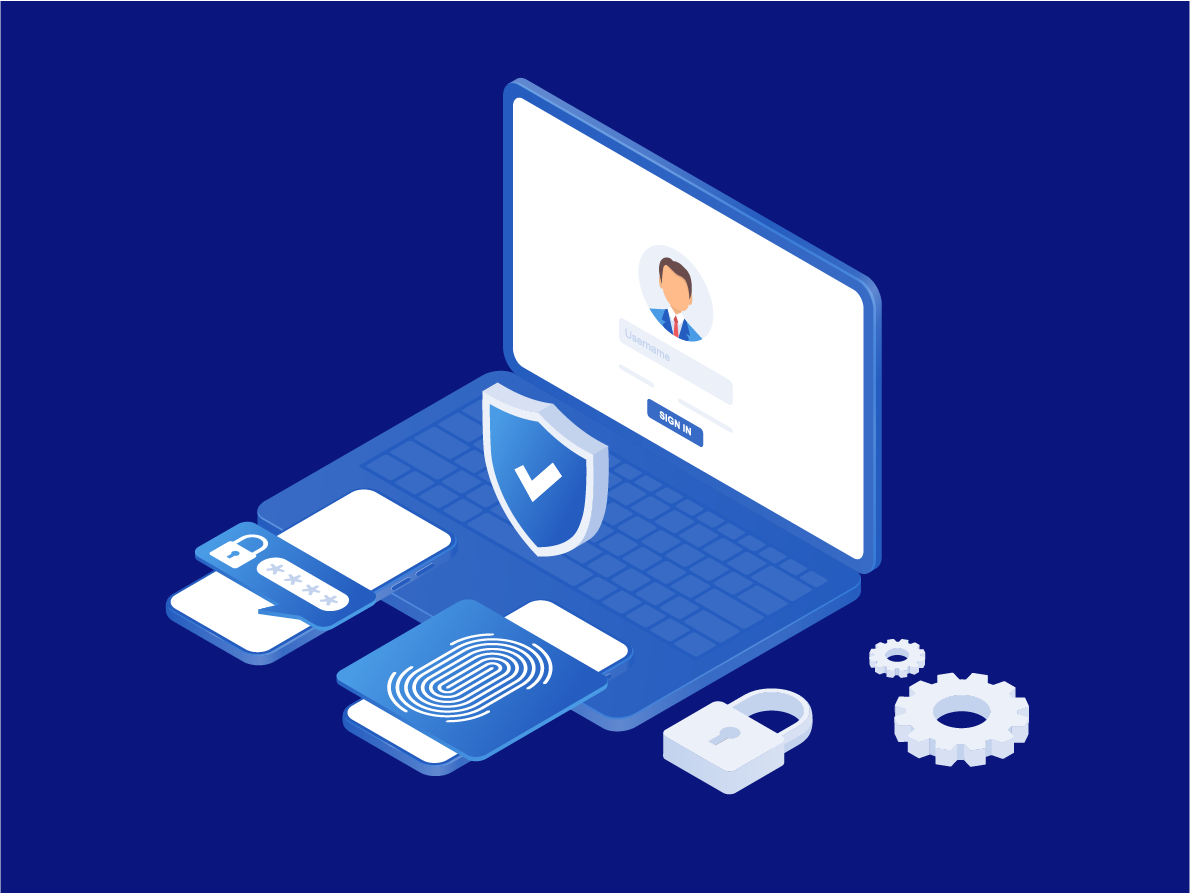
Cryptocurrency has been a global hit, especially among investors, for its potential value. It opened business opportunities for companies like crypto exchanges that allow people to trade cryptocurrency and other digital assets. The crypto market is also projected to grow further, with an estimated 11% compound annual growth rate (CAGR) from $910 million in 2021 to approximately $1.9 billion in 2028.
With crypto growing, demand for digital wallets is also expanding. Crypto investors and traders now need mobile applications with robust security and payment authentication to secure withdrawals and monitor online transactions.
Non-fungible tokens (NFTs), another application of blockchain technology, have also risen. Research and Markets forecasted that the NFT market would grow by $21 billion in 2022, a 52% CAGR increase from 2021. "The Merge" by Pak is the highest sold NFT to date, which was sold at nearly $92 million. This expansion likewise emphasizes the need for more secure digital wallets and NFT marketplaces so users can safely start their NFT collections.
As the crypto industry progresses, so do the number of fraudulent activities. Chainalysis found illicit transactions related to criminal activity in crypto market amounted to $14 billion in 2021, an all-time high in value stolen. It also mentioned that this number might continue to increase.
These growing digital threats provide challenges that crypto companies must address so they can continue to provide reliable and secure transactions. Raising awareness and applying real time fraud prevention measures to counter crypto attacks and scams is more critical than ever.
The Vulnerability of the Blockchain Technology
The blockchain technology used in cryptocurrency and NFT platforms is open-sourced ledgers safeguarded by cryptography, decentralization, and consensus. These features are designed to make it hard for hackers to attack the system. And because crypto data is duplicated and stored across a network of computers, it can reduce the risk of data manipulation and fraud.
For instance, if someone tries to tamper with a block, the whole blockchain sequence changes. This action changes the unique hash values or fingerprint of data and becomes unrecognizable to the system. Tampered blocks will be rejected by the other nodes in the network.
However, this by no means means that blockchain networks are invincible. They are, in fact, prone to cybercrimes and hacking. In the past years, online criminals have become clever in advancing their illegal acts by exploiting codes, stealing keys, or hacking victims' devices.
Crypto scamming varies depending on the approach fraudsters use to lure their victims. Generally, there are two distinct categories:
Social Engineering Scams
Social engineering scams aim to deceive people to get vital information about their digital wallets or send money to the culprit. Scammers psychologically manipulate their victims to believe they are talking with a trusted institution or person. They can disguise themselves as a government agency, technical support worker, workmate, or friend.
Investment or Business Opportunity Scams
Crypto investment is popular because investors can earn a big profit if crypto swings high. Scammers take advantage of this to set up fake websites offering a quick high return on investment (ROI). They promise that the victim will get larger returns if they deposit large sums. However, once they have stolen enough, the fraudster runs away, leaving no trace for the victim to track and retrieve their money.
Different Crypto Scams
Crypto scams come in many different forms. Bad actors can use dating websites, apps, or social media to target users. They manipulate the victim by impersonating their loved ones, celebrities, or influencers. After falling into the trap, conversations turn to cryptocurrency investment and then sharing of authentication credentials. In 2021, a man lost $277,000 in an online romance scam to a woman he met on Tinder.
In a giveaway scam, the cybercriminal promises to match or multiply the crypto sent to their accounts. Others use the pump and dump schemes to deceive traders into rushing and buying coins. They create fake hype about a coin or token to increase its value and then sell their shares once the price inflates.
Phishing attacks target the victim's crypto wallet information, particularly the access credentials. Here, criminals can lure their recipients to a specially-designed website to collect their private keys.
Blackmailing and extortion are also possible. The fraudsters will claim they possess records of the victim's supposed illicit activity and threaten to release it unless the user cooperates. They either extort the target's private keys or force them to transfer crypto. The decentralized cryptosystem has also become a perfect avenue for money laundering, terrorist funding, and other financial-related cybercrimes. The lack of regulation makes it nearly impossible to identify the culprit as transactions can be anonymous.
How can Service Providers Strengthen their Crypto Security?
User scams and system attacks are big threats to crypto exchanges, digital wallets, and NFT marketplaces. Hackers and fraudsters have become more resourceful in stealing others' digital assets in the blockchain network. These growing crypto-threats make digital security measures more important. Service providers need robust and effective solutions to protect their platforms and users from cybercriminals.
There are various crypto security tools available today. An example is phishing and fraud detection programs that can protect investors from malware, in-browser scripts, data leaks, and crypto threats. These types of real time fraud prevention tools can also detect real-time account takeovers and other malicious activities.
Implementing MFA methods like passwordless authentication will also strengthen a crypto platform's cybersecurity. Storing crypto assets in digital wallets with FIDO2 biometric authentication can provide robust security. Authentication solutions like LoginID that connect to the FIDO2 protocol allow companies to safeguard user accounts and resources while maintaining data integrity.
FIDO2 biometric authentication helps solve online verification problems in various channels, browsers, and operating systems. It replaces traditional passwords with seamless user verification and biometric authentication to prevent fraud and hacking activities.
Instead of memorizing letters, numbers, or symbol combinations, users can rely on biometric digital signature authentication to secure information across desktops and mobile platforms. LoginID's passwordless authentication is also easy to leverage on mobile devices, giving clients a user-friendly experience while protecting their crypto investments.
LoginID’s solution also provides additional security measures like transaction confirmation with biometric digital signature. This can act as a payment authentication measure to prevent unauthorized fraudulent transfers of crypto or NFTs from a digital wallet. Before crypto or an NFT is transferred, the owner is prompted to enter their biometric digital signature to confirm the transaction. This, both, generates a time-stamped digital receipt that shows the owner made the transfer and prevents hackers who have gained access to an account from transferring the digital assets out.
To learn more about how LoginID can increase businesses' crypto security and provide your company with real time fraud prevention solutions, get started by getting in touch with our experts today at sales@loginid.io. You may also register an account to get immediate access to LoginID’s biometric authentication solution, check out our tutorial or read our documentation.
References:
- https://constantinecannon.com/practice/whistleblower/whistleblower-types/financial-investment-fraud/cryptocurrency-fraud/
- https://www.ibm.com/topics/blockchain-security
- https://www.worldcryptoindex.com/advantages-disadvantages-decentralized-blockchains/
- https://www.investor.gov/protect-your-investments/fraud/types-fraud/ponzi-scheme
- https://www.cnet.com/personal-finance/crypto/cryptocurrency-pump-and-dump-schemes-what-you-should-know-about-these-scams/
- https://www.cnbctv18.com/cryptocurrency/bitcoiner-loses-coins-worth-a-million-in-giveaway-scamwhat-are-these-scams-all-about-12187792.htm
- https://www.aarp.org/money/scams-fraud/info-2019/cryptocurrency.html
- https://www.investopedia.com/articles/forex/121815/bitcoins-price-history.asp#citation-35
- https://time.com/nextadvisor/investing/cryptocurrency/future-of-cryptocurrency/
- https://www.ceotodaymagazine.com/2022/02/why-does-the-government-want-to-regulate-cryptocurrency/


